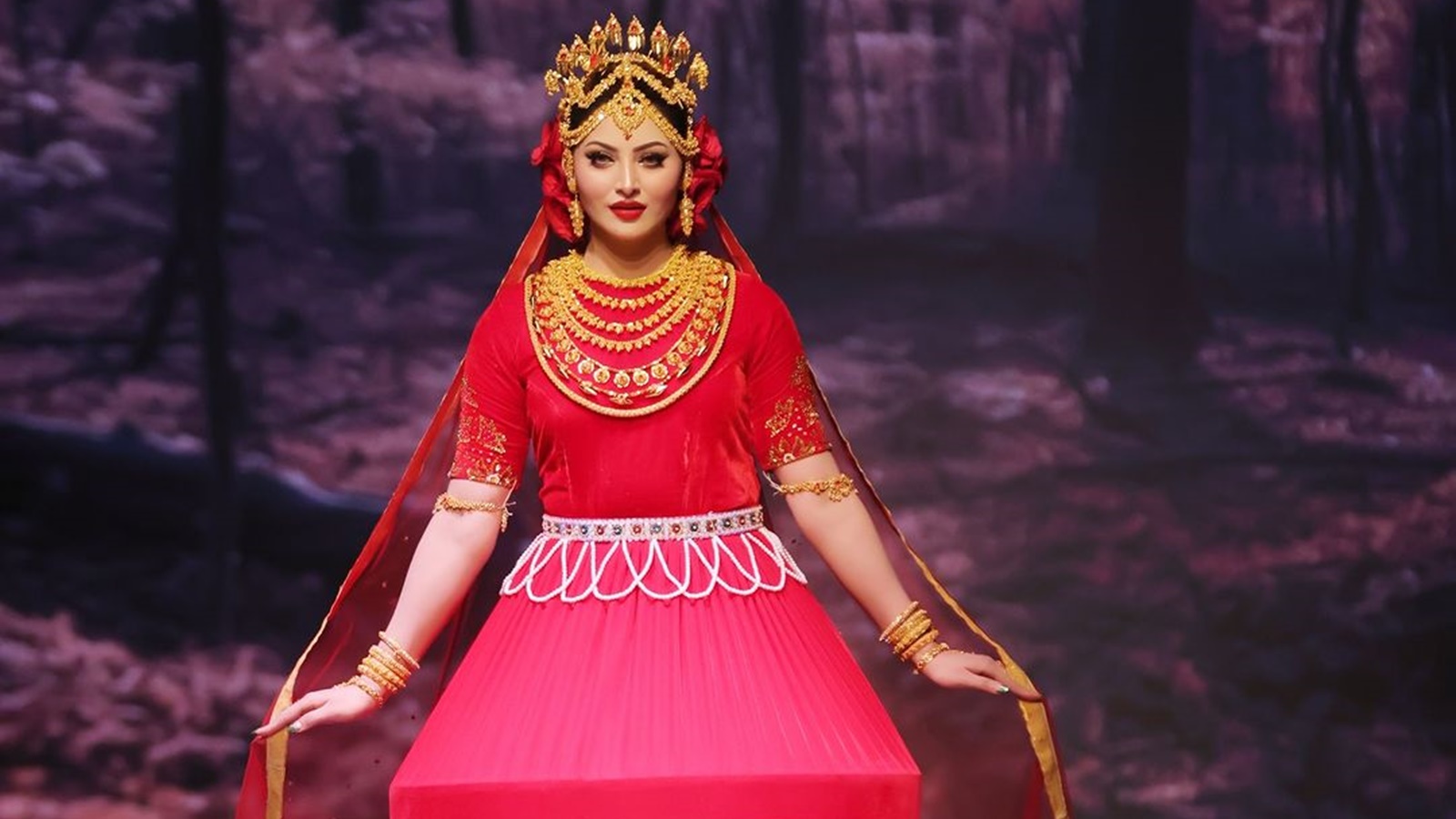
URVASHI RAUTELA BECOMES ‘FIRST INDIAN ACTOR’ TO WALK THE RAMP IN A 24K GOLD MANIPURI KUMIN POTLOI
For the first time in fashion history, Urvashi Rautela walked the ramp in a traditional Manipuri bridal ensemble made of 24-karat gold. Designed by Robert Naorem, the model-actor looked resplendent in a bright red kumin potloi, a traditional costume worn by Manipuri women, particularly during important cultural events like weddings and Rasa Leela performances. In keeping with her outfit, Urvashi Rautela accessorised the look with gold jewellery, as she sashayed down the ramp in the outfit featuring khoi and kumin hand embroidery, enhanced with gold stones accents.
Taking to Instagram, the Imphal-based designer shared that his creation embodies an "otherworldly yet familiar Manipur modern aesthetic, both relevant & timeless."
To learn more about the outfit, we reached out to Ruhi Munjial, Assistant Professor, Department of Fashion Design, NIFT Panchkula, who explained that the kumin potloi consists of a cylindrical-shaped skirt made from thick fabric reinforced with bamboo and adorned with satin cloth, mirrors, glitter, and other decorative elements. It is typically accompanied by a woven belt around the waist, and an innaphi—a delicate muslin shawl draped around the upper body.
"The outfit consists of two main elements: the cylindrical kumin or phumila skirt and the upper poswan or poswak skirt. The kumin, which is stiff and cylindrical, forms the lower part of the costume and contributes to its characteristic silhouette. Historically, the poswan, or upper skirt, evolved from a more fluid, draped garment into its modern stiffened form, resembling ribbons in structure and adding a visual spectacle to the performance," she added.
How are potlois significant to Manipuri tradition?
Munjial shared that the potloi carries deep cultural significance in Manipuri tradition, especially for the Meitei Hindu community.
"They were introduced by Maharaja Bhagyachandra (1749-1798) for dancers performing the Rasa Leela, a classical Manipuri dance that re-enacts the celestial love between Lord Krishna and the Gopis. Originally, a heavy, stiffened skirt was meant to 'hide the feet from Krishna' during the dance, perhaps implying a level of modesty or divine reverence," she said.
Over time, the potloi became integral to the bridal attire of Manipuri Hindu brides. Munjial mentioned that wearing a potloi during the wedding ritual is so important that the dress is stitched directly onto the bride shortly before the ceremony.
As for the jewellery, she shared that the headdress, known as the kajenglei or leitreng, is intricately designed, often using gold, silver, or other precious materials. Brass or jari ornaments, such as samjinam and samjithet, are worn on the regular bun, and the thin scarf covers the bun from behind.
"The headgear worn by Urvashi closely resembles the ones in Jhapa, a traditional attire introduced during the reign of Maharaja Chandrakirti in 1850 as part of the Nityaras performances. The Jhapa was also later adopted for the Diva Ras during the reign of Maharaja Churachand in 1941," said Munjial.
She also mentioned that the associated ornaments, primarily crafted from brass with red stones or silver jari, consist of several distinct elements: the mini, worn along the parting of the hair; the karnal, which covers the ears; and the kulak, a butterfly-shaped ornament made of silver jari placed on either side of the parting.
For the latest news from across India, Political updates, Explainers, Sports News, Opinion, Entertainment Updates and more Top News, visit Indian Express. Subscribe to our award-winning Newsletter Download our App here Android & iOS
2024-09-18T13:05:29Z dg43tfdfdgfd